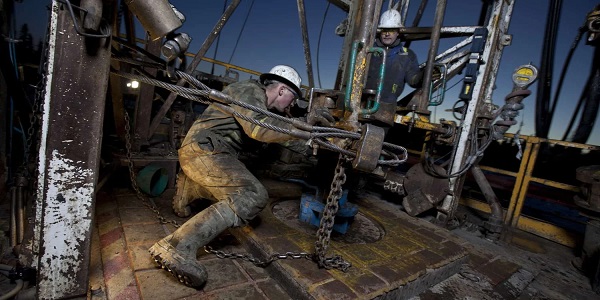Opinion
The repair job at Immigration

|
|
The department’s top bureaucrat answers a critical report, with rare candour
Seven months ago Neil Yeates, a retired former deputy minister of immigration, submitted a report on the organization of the department of Immigration, Refugees and Citizenship Canada to the current deputy minister, Christiane Fox.
Yeates’s 28-page report was blunt, plainspoken, critical but constructive. It said “the current organizational model at IRCC is broken.” At a time of global upheaval and dizzying growth in immigration levels, the department that decides who gets into Canada was no longer “fit for purpose,” he wrote. It was time for “major change.” When? “[T]he advice is to proceed now.”
On Thursday, a copy of Yeates’s report landed in my email inbox.
On Thursday night, Christiane Fox told me she is implementing many of Yeates’s recommendations, and described for me her plans for the department with a level of detail and candour I almost never see in today’s Ottawa.
I’m keeping the paywall off this story because I want it to be widely read. But producing work like this is my full-time job, and I’m able to get stories like this because people understand I’m writing for one of the best audiences in Canadian journalism. If you want to support my full-time work and join that audience, consider subscribing or upgrading to a paid subscription.
Copies of Yeates’s February IRCC Organizational Review Report have been floating around Ottawa because the department began implementing big changes this week. Some of the nearly 13,000 people who work in the department have asked for the rationale behind the changes. Yeates’s 28-page report makes the case succinctly.
Yeates was a top civil servant in Saskatchewan before moving to Ottawa in 2004. He held senior positions in three other departments before becoming deputy minister at Citizenship and Immigration Canada, the department now known as IRCC, where he served from 2009 to his retirement in 2013. That means he was Jason Kenney’s deputy minister for all of Kenney’s time at Immigration, but he was also a Trudeau Foundation mentor if you want to get excited about that instead.
His report’s purpose, he wrote, “is to provide strategic advice to the Deputy Minister on how the department can become a more efficient and effective organization.” After interviewing 36 people inside and outside the department, he decided it was a mess.
‘“[T]he current organizational model at IRCC is broken but is being held together by the hard work and dedication of staff,” he wrote. “At IRCC today department-wide planning is limited and some interviewees suggested it has in fact disappeared completely . There is no multi-year strategic plan, annual plans are not in place consistently across the department and consequently reporting is seen by many as haphazard.”
What the department did have going for it was a decent work environment: “In talking to senior managers at IRCC the culture was universally seen as ‘committed,’ ‘collaborative,’ ‘supportive’ and so on.” The senior managers Yeates interviewed saw this culture as “helping to overcome the shortcomings of the current organizational structure and of the weakness of the governance and management systems.”
The immigration department has always been the main portal between a messy world and an anxious nation. Lately the world had grown messier, Yeates noted, and the demands on the department were starting to hurt. “[T]he operating environment, both nationally and internationally, has grown ever more complex, unstable and frenetic,” he wrote.
In response, “the department has grown exponentially,” from 5,217 staff when Yeates left it in 2013 to12,721 this year, an expansion of 144%. The “Ex complement,” the department’s management cadre, grew from 135 to 227 over the same period, a smaller increase of 68%. That might explain why the department’s managers are so stressed, Yeates speculated. At any rate, the department’s structure was conceived for a much smaller staff and caseload.
To catch up, Yeates proposed big reform in four areas: Organizational Structure, Governance, Management Systems and Culture. He cautioned that tinkering with only one or a couple of those areas wouldn’t have the effect that a “Big Bang,” however difficult, would achieve.
The big problem in Organizational Structure was that the department isn’t organized along business lines: that one of the world’s leading destinations for asylum and humanitarian immigration doesn’t have an assistant deputy minister for asylum, for instance. The obvious challenge was that in a hectic world there will certainly be more crises, like those of recent years. “Should IRCC have a permanent ‘response team’ in place? The short answer is no.” Between crises that team of experienced trouble-shooters would just be twirling their thumbs. Instead Yeates proposed better contingency planning, including lessons learned from other crisis-management departments such as National Defence.
Under Governance, Yeates found a proliferation of over-large committees sitting through endless presentations and not really sure, at the end of each, whether they had decided anything. “Most of the actual decision-making occurs in DMO/ADM bilats,” he wrote, referring to meetings between the Deputy Minister’s office and a given Assistant Deputy Minister.
The section of Yeates’s report that deals with Management Systems reads like a parable of contemporary Ottawa: a “series of periodic crises” that somehow nobody anticipated, “descend[ing] into ‘issues management.’” What’s needed is much better planning and reporting, he wrote. When he was running the department barely a decade ago, every part of the department was reporting on progress against targets every three months. That system has fallen by the wayside. A department that’s obsessed with its “priorities” or with the to-do items in “a minister’s mandate letters” is “inherently limited” and guaranteed to be side-swiped by events intruding from the real world, he wrote.
The upshot of all this tunnel vision was that the department was expecting to “lapse,” or leave unspent, $368 million in projected spending for the year underway, even as passport-related spending was projecting a $238 million deficit.
Yeates’s report closed with the sort of plea that’s traditional in this sort of exercise, essentially pleading not to be ignored. “IRCC is at a crossroads and as Yogi Berra famously quipped ‘when you come to a fork in the road, take it,’” he wrote. Change is hard, but a “substantial majority” of the people he interviewed told him it was overdue.

Neil Yeates and Christiane Fox.
And that’s where the report ends. I had to decide what to do with it. First, always consider the possibility that you’ve been handed a fake report, or the first draft of something that was later amended beyond recognition. I emailed the office of Immigration Minister Marc Miller looking for comment. They handed me off to the civil servants in the department’s communications staff. But I also emailed Christiane Fox, the deputy minister, offering her a chance to comment. This is the sort of chance that people in Ottawa usually don’t touch with a barge pole.
But Fox called me on Thursday night and responded in detail. I asked: was the conversation on the record? She thought out loud for a few seconds, working her way up to a “Yes.” I don’t want to belabour this, but that answer is very rare these days.
The other way you can help me, besides subscribing, is to tell people about the work I’m doing here. Share this story with friends and family, or post it to your social networks. Let people know what we’re building here.
Christiane Fox had been the DM at Indigenous Services for all of 22 months when she was sent to run IRCC in July of 2022. The new job “felt like crisis”: the department was sending weekly updates to an ad hoc committee of ministers whose job was to fix months of chaos in airports and passport offices.
“They felt like they were under duress,” Fox said. “Everyone was exhausted.” New staff were just “tacked on when there was a problem,” including the creation of an entirely new sector for Afghanistan. Fox talked about this with some of the most experienced public servants in town, including Yeates and Richard Dicerni, Fox’s former DM from her days as a young public servant at Industry, who passed away this summer and whose contribution to public life in Canada is hard to measure.
“I kind of said, ‘We’ve got to make some changes. And I don’t want to do it overnight. But I also don’t want to spend two years figuring out what a new model could look like.’” Yeates, whom she didn’t know well but who knew the department’s history, seemed like solid outside counsel.
While Yeates was doing his thing, Fox and the previous immigration minister, Sean Fraser, were consulting — with “business leaders, academics and clients” — about the department’s future. By June of this year, she had a plan, based on Yeates’s report and those consultations. She’s been rolling it out since then, from top managers on down, and on Wednesday, by way of explanation for the changes that are coming, she sent the Yeates report to enough people that I got a copy. A department-wide meeting is scheduled for this coming week.
What’s changing? “The model is now just more of a business-line model,” she said, reflecting Yeates’s first big recommendation.
So there’ll be a stronger crisis-planning sector. In a world that keeps producing humanitarian crises, the goal is to learn lessons for next time from Ukraine, Afghanistan and elsewhere. “Most importantly, we’ll have a group dedicated to thinking about these issues, planning for crisis.” It won’t eliminate the need to “surge,” or quickly add new staff when something flares up. “But in the past, we ended up surging so much that all of our other business lines suffered every time there was a crisis.” The goal now is to get better at anticipating so the department’s regular work doesn’t suffer.
“Asylum and Refugee. There was no Asylum ADM,” she said, reflecting another Yeates critique. “This is probably the thing that causes me the most heartache, in terms of, how are we going to deal with this as a country, globally? What are some of the tools that we have? How do we support the most vulnerable? How do we have a system that is fast and fair? So Asylum and Refugee will now be a sector within the department.”
In addition, there’ll be a sector focused on Economic Immigration and Family. “The business community didn’t really feel like we were actually talking to them about labour shortages, about skills missions, about what is the talent that the country needs.” And a sector on francophone immigration, identifying French-speaking sources of immigration and taking into account the needs of French-speaking newcomers.
“Other sectors remain kind of consistent. Like, we’ve always had a focus on border and security, but we will now have a team that’s really migration integrity, national security, fraud prevention, and looking at case management in that context.”
Fox said she’s working on more of a “client focus” in the department’s work. “When I joined the department I remember, my first few weeks, thinking, ‘Everybody talks about inventory and backlog and process.’ But I didn’t feel clients and people were at the forefront.” This may sound like a semantic difference. But anyone who’s been treated as inventory and backlog can testify to the potential value in any reform that restores a measure of humanity to recipients of government service.
I’ve been arguing for months here that simply acknowledging problems and identifying possible solutions is better communications than the happy-face sloganeering that passes for so much of strategic comms these days. Here, quite by accident, I’d stumbled across somebody who seems to have had similar thoughts. (There’s an irony here, because Fox’s CV includes a long stint as a director of strategic communications in the Privy Council Office.)
“There will be things that will come up,” Fox said, “that may not be as smooth a transition as we thought, or maybe a bit clunky, that we need to rethink. What we’ve told the employees is, it won’t be perfect. We needed to change, we’re going to change, but there’s going to be room for conversation around issues that arise as we go through this process.”
To subscribe to the full Paul Wells experience, upgrade your subscription.
Business
US Energy Secretary says price of energy determined by politicians and policies


From the Daily Caller News Foundation
During the latest marathon cabinet meeting on Dec. 2, Energy Secretary Chris Wright made news when he told President Donald Trump that “The biggest determinant of the price of energy is politicians, political leaders, and polices — that’s what drives energy prices.”
He’s right about that, and it is why the back-and-forth struggle over federal energy and climate policy plays such a key role in America’s economy and society. Just 10 months into this second Trump presidency, the administration’s policies are already having a profound impact, both at home and abroad.
While the rapid expansion of AI datacenters over the past year is currently being blamed by many for driving up electric costs, power bills were skyrocketing long before that big tech boom began, driven in large part by the policies of the Obama and Biden administration designed to regulate and subsidize an energy transition into reality. As I’ve pointed out here in the past, driving up the costs of all forms of energy to encourage conservation is a central objective of the climate alarm-driven transition, and that part of the green agenda has been highly effective.
Dear Readers:
As a nonprofit, we are dependent on the generosity of our readers.
Please consider making a small donation of any amount here.
Thank you!
President Trump, Wright, and other key appointees like Interior Secretary Doug Burgum and EPA Administrator Lee Zeldin have moved aggressively throughout 2025 to repeal much of that onerous regulatory agenda. The GOP congressional majorities succeeded in phasing out Biden’s costly green energy subsidies as part of the One Big Beautiful Bill Act, which Trump signed into law on July 4. As the federal regulatory structure eases and subsidy costs diminish, it is reasonable to expect a gradual easing of electricity and other energy prices.
This year’s fading out of public fear over climate change and its attendant fright narrative spells bad news for the climate alarm movement. The resulting cracks in the green facade have manifested rapidly in recent weeks.
Climate-focused conflict groups that rely on public fears to drive donations have fallen on hard times. According to a report in the New York Times, the Sierra Club has lost 60 percent of the membership it reported in 2019 and the group’s management team has fallen into infighting over elements of the group’s agenda. Greenpeace is struggling just to stay afloat after losing a huge court judgment for defaming pipeline company Energy Transfer during its efforts to stop the building of the Dakota Access Pipeline.
350.org, an advocacy group founded by Bill McKibben, shut down its U.S. operations in November amid funding woes that had forced planned 25 percent budget cuts for 2025 and 2026. Employees at EDF voted to form their own union after the group went through several rounds of budget cuts and layoffs in recent months.
The fading of climate fears in turn caused the ESG management and investing fad to also fall out of favor, leading to a flood of companies backtracking on green investments and climate commitments. The Net Zero Banking Alliance disbanded after most of America’s big banks – Goldman Sachs, J.P. Morgan Chase, Citigroup, Wells Fargo and others – chose to drop out of its membership.
The EV industry is also struggling. As the Trump White House moves to repeal Biden-era auto mileage requirements, Ford Motor Company is preparing to shut down production of its vaunted F-150 Lightning electric pickup, and Stellantis cancelled plans to roll out a full-size EV truck of its own. Overall EV sales in the U.S. collapsed in October and November following the repeal of the $7,500 per car IRA subsidy effective Sept 30.
The administration’s policy actions have already ended any new leasing for costly and unneeded offshore wind projects in federal waters and have forced the suspension or abandonment of several projects that were already moving ahead. Capital has continued to flow into the solar industry, but even that industry’s ability to expand seems likely to fade once the federal subsidies are fully repealed at the end of 2027.
Truly, public policy matters where energy is concerned. It drives corporate strategies, capital investments, resource development and movement, and ultimately influences the cost of energy in all its forms and products. The speed at which Trump and his key appointees have driven this principle home since Jan. 20 has been truly stunning.
David Blackmon is an energy writer and consultant based in Texas. He spent 40 years in the oil and gas business, where he specialized in public policy and communications.
Energy
A look inside the ‘floatel’ housing B.C.’s LNG workforce

From Resource Works
Innovative housing solution minimizes community impact while supporting the massive labour force needed for the Woodfibre LNG project.
The Woodfibre LNG project — a national leader in Indigenous partnerships and a cornerstone of global energy security — relies on a large construction workforce that drives economic prosperity across the region. For many of these workers, “home” is a ship.
Refitted from a cruise liner into a dedicated accommodation vessel, or “floatel,” this innovative solution houses up to 600 workers near Squamish, B.C., while keeping pressure off local housing and minimizing the project’s community footprint.
These exclusive images, captured a year ago, offer a rare retrospective look inside the original floatel. MV Isabelle X. With a second accommodation ship, the MV Saga X, recently arrived, this photo essay gives a timely, ground-level view of life aboard: individual cabins, a full-service dining hall, recreation spaces and custom laundry facilities. It’s a glimpse into the offshore dormitory that anchors daily life for the crew bringing this vital energy project to completion.

An arcade room is seen on a “floatel” that Woodfibre LNG plans to use to house 600 construction workers at a liquefied natural gas export facility being built near Squamish, during a media tour in Vancouver, on Thursday, May 9, 2024. The ship arrived in B.C. waters in January after a 40-day journey from Estonia, where it had sheltered Ukrainian refugees, but the District of Squamish council voted three to four against a one-year permit for its use last week.

A dining area is seen on a “floatel” that Woodfibre LNG plans to use to house 600 construction workers at a liquefied natural gas export facility being built near Squamish, during a media tour in Vancouver, on Thursday, May 9, 2024. The ship arrived in B.C. waters in January after a 40-day journey from Estonia, where it had sheltered Ukrainian refugees, but the District of Squamish council voted three to four against a one-year permit for its use last week.

A cabin is seen on a “floatel” that Woodfibre LNG plans to use to house 600 construction workers at a liquefied natural gas export facility being built near Squamish, during a media tour in Vancouver, on Thursday, May 9, 2024. The ship arrived in B.C. waters in January after a 40-day journey from Estonia, where it had sheltered Ukrainian refugees, but the District of Squamish council voted three to four against a one-year permit for its use last week.

Bridgemans Services Group president Brian Grange stands at the stern on a renovated cruise ship known as a “floatel” that Woodfibre LNG plans to use to house 600 construction workers at a liquefied natural gas export facility being built near Squamish, during a media tour in Vancouver, on Thursday, May 9, 2024. The ship arrived in B.C. waters in January after a 40-day journey from Estonia, where it had sheltered Ukrainian refugees, but the District of Squamish council voted three to four against a one-year permit for its use last week.

A custom built heat pump unit that allows the ship to avoid using diesel while docked and at anchor is seen on a “floatel” that Woodfibre LNG plans to use to house 600 construction workers at a liquefied natural gas export facility being built near Squamish, during a media tour in Vancouver, on Thursday, May 9, 2024. The ship arrived in B.C. waters in January after a 40-day journey from Estonia, where it had sheltered Ukrainian refugees, but the District of Squamish council voted three to four against a one-year permit for its use last week.

The main entry and exit area for workers is seen on a “floatel” that Woodfibre LNG plans to use to house 600 construction workers at a liquefied natural gas export facility being built near Squamish, during a media tour in Vancouver, on Thursday, May 9, 2024. The ship arrived in B.C. waters in January after a 40-day journey from Estonia, where it had sheltered Ukrainian refugees, but the District of Squamish council voted three to four against a one-year permit for its use last week.

A renovated cruise ship known as a “floatel” that Woodfibre LNG plans to use to house 600 construction workers at a liquefied natural gas export facility being built near Squamish, is seen at anchor in the harbour in Vancouver, on Thursday, May 9, 2024. The ship arrived in B.C. waters in January after a 40-day journey from Estonia, where it had sheltered Ukrainian refugees, but the District of Squamish council voted three to four against a one-year permit for its use last week.

A tugboat and water taxi are seen docked at a renovated cruise ship known as a “floatel” that Woodfibre LNG plans to use to house 600 construction workers at a liquefied natural gas export facility being built near Squamish, at anchor in the harbour in Vancouver, on Thursday, May 9, 2024. The ship arrived in B.C. waters in January after a 40-day journey from Estonia, where it had sheltered Ukrainian refugees, but the District of Squamish council voted three to four against a one-year permit for its use last week.
All photos credited to THE CANADIAN PRESS/Darryl Dyck
Resource Works News
-

 Business1 day ago
Business1 day agoCanada’s climate agenda hit business hard but barely cut emissions
-

 MAiD2 days ago
MAiD2 days agoFrom Exception to Routine. Why Canada’s State-Assisted Suicide Regime Demands a Human-Rights Review
-

 Alberta1 day ago
Alberta1 day agoAlberta Sports Hall of Fame Announces Class of 2026 Inductees
-

 Business2 days ago
Business2 days agoCarney government should privatize airports—then open airline industry to competition
-

 Business16 hours ago
Business16 hours agoCarney’s Toronto cabinet meetings cost $530,000
-

 Business2 days ago
Business2 days agoIs Carney Falling Into The Same Fiscal Traps As Trudeau?
-

 Alberta2 days ago
Alberta2 days agoCarney’s pipeline deal hits a wall in B.C.
-

 Censorship Industrial Complex1 day ago
Censorship Industrial Complex1 day agoConservative MP Leslyn Lewis slams Liberal plan targeting religious exemption in hate speech bil











